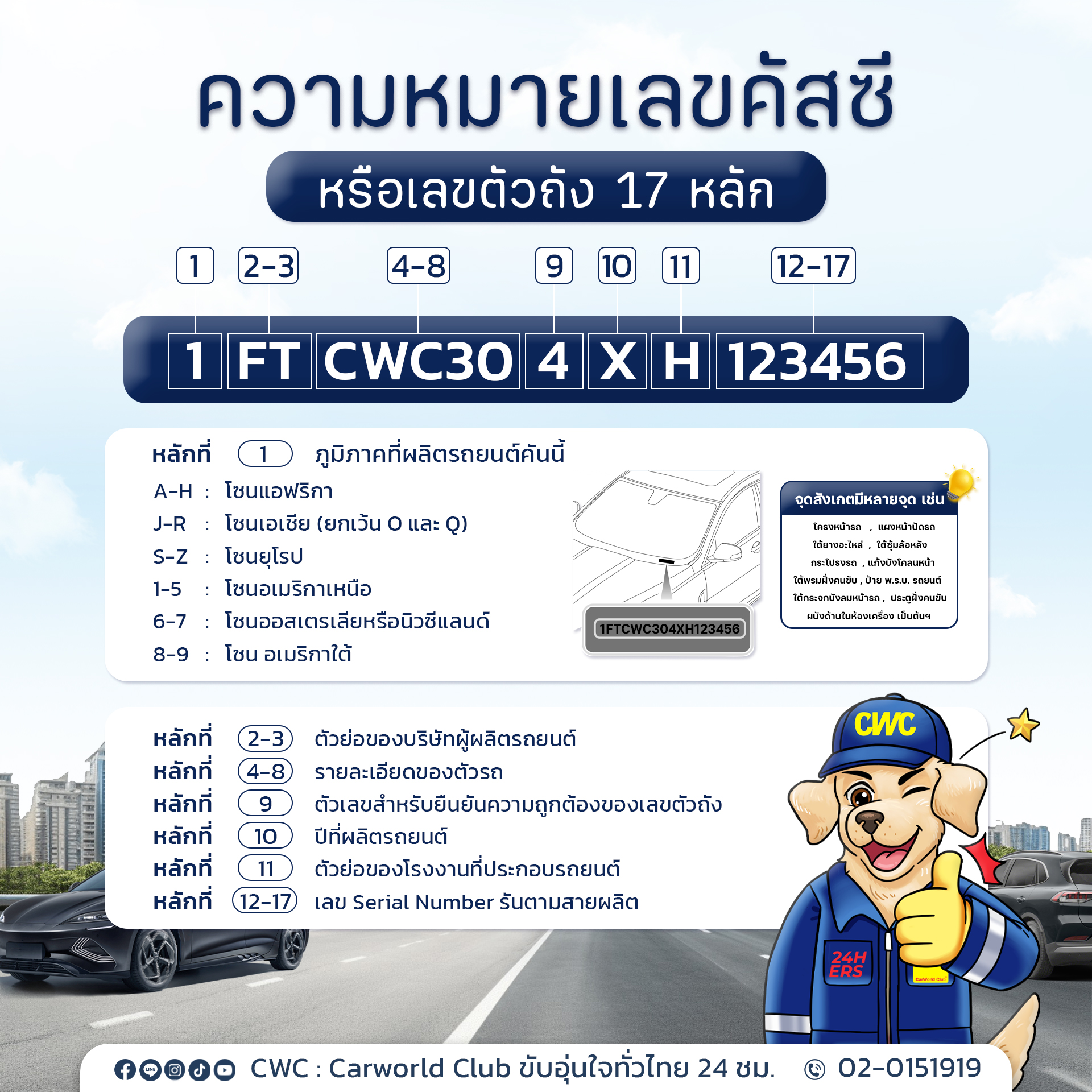
The Vehicle Identification Number (VIN) of each car is unique, as it provides information about the manufacturing location, manufacturer, body type, assembly plant, and other details. The VIN is crucial for identifying vehicle specifics and is used for annual tax renewals, vehicle transfers, and even insurance claims. The VIN is also matched to the vehicle’s registration documents.
Meaning of the 17 VIN Characters:
- Character 1: Indicates the region where the car was manufactured:
- A–H: Africa
- J–R: Asia (excluding O and Q)
- S–Z: Europe
- 1–5: North America
- 6–7: New Zealand or Australia
- 8–9: South America
- Characters 2–3: Identify the vehicle manufacturer, e.g.,
- M8: Mazda Thailand
- R0: Toyota Thailand
- RH: Honda Thailand
- Characters 4–8: Provide vehicle details such as body type, transmission system, and sub-model, varying by manufacturer.
- Character 9: A check digit used to verify the authenticity of the VIN and prevent counterfeiting.
- Character 10: Indicates the model year, starting from 1980:
- A = 1980, B = 1981, …, Y = 2000
- For 2001–2009, numbers 1–9 were used, with 1 representing 2001.
- From 2010 onward, letters were reused (e.g., A = 2010).
- Character 11: Identifies the assembly plant.
- Characters 12–17: The last 6 characters form the Chassis Number, a unique serial number for each vehicle. While the first 11 characters can be similar, these 6 digits differ for every car.
VIN Location:
The VIN is typically found in various parts of the car, such as:
- Dashboard
- Driver-side door
- Under the hood
- Registration documents (e.g., car tax booklet)
- Near the spare tire
- Under the driver-side floor mat
- Vehicle owner’s manual
For assistance or further information:
📞 02-015-1919 Ext. 2 (Membership Department)
📱 Line Official: @cwc.telesale
💻 Website: www.cwc.co.th




Leave a Reply